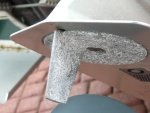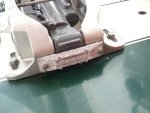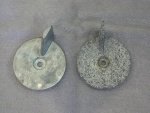I have twin 40HP Hondas, 2002, with 460hours. Most of their use has been in saltwater. The zincs are looking pretty pitted. For both engines the parts will be well over $100. Before I order the parts I wondered if the pitting and partial consumption really effects how well they would continue to do the job. After all the anode is supposed to get used up and if any of it remains it would seem logical that it would still be working? Any one have any thoughts or advice on the subject? The shop manual also shows an anode in the cooling system under the water jacket cover. I haven't looked at it yet.





